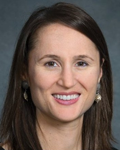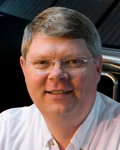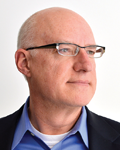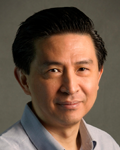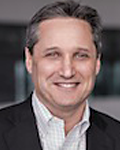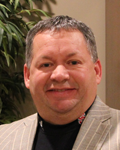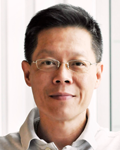Charles Wuischpard
Vice President Data Center Group
General Manager Workstations and High Performance Computing
Intel
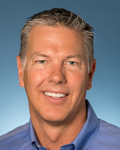 Charles Wuischpard is vice president of the Data Center Group and general manager of Workstation and High Performance Computing at Intel Corporation. In this role, Wuischpard leads execution and manages the profit and loss for Intel’s workstations and high performance computing business.
Charles Wuischpard is vice president of the Data Center Group and general manager of Workstation and High Performance Computing at Intel Corporation. In this role, Wuischpard leads execution and manages the profit and loss for Intel’s workstations and high performance computing business.
Prior to joining Intel in 2013, Wuischpard was CEO and president of Penguin Computing, where he drove profitable growth of over 40 percent per year over five years by targeting emerging datacenter markets and HPC cloud solutions.
Prior to his role at Penguin, he held vice president positions at Golden Gate Software and Versant, and spent nearly 17 years at IBM in a career that ranged from chip designer to corporate sales and marketing.
HPCwire: Hi Charles. Congratulations on being selected as an HPCwire 2015 Person to Watch for the second year running. Obviously, 2014 was a very big year for you as you transitioned to your new role with Intel. How is the transition going? Were there any lessons that you learned from in 2014 that you’ll lean on for the year(s) ahead?
Well, I survived my first year! Seriously, Intel is an intense and hard-working culture and I’ve never worked with so many brilliant people in one company before. It’s been daunting but also an honor. The HPC segment is so interesting, too. We have this great Xeon business that drives the world but also a number of what I would call young high growth businesses in Xeon Phi, high performance fabric, silicon photonics, in package memory, and parallel file systems. I learned many lessons but as always, it was our customers that made the biggest impact.
Last year I travelled over 280,000 miles and met many leaders from the largest HPC sites to understand their needs and particular challenges. These conversations obviously covered short and long range plans and technology roadmaps, but importantly; unique mission objectives, skills and talent gaps, political and economic considerations, and the need to advance software modernization efforts and investments in their organizations. If there is one common lesson that I will take forward, it’s that the frontiers of computing will only come from close collaboration and co-design efforts with our customers, technology partners and the tremendous ecosystem that has developed over decades.
HPCwire: Intel carries a lot of gravity in the HPC space, giving you a unique perspective to witness the evolution of the market and the trends that shape it. Finish this sentence for us: “For HPC, 2015 will be the year of _____________,” and explain why you think this.
Without sounding too self-serving, I think 2015 for HPC will be the year that investments in code modernization efforts really get serious. For at least the last decade IDC has been talking about how the biggest barrier to the future of HPC is in the software and applications. It has been too easy to postpone these investments but the future is now clearly about stable clock speeds, many more cores, new unique integrated memory technologies, and performance gains that come from a consistent and cohesive system architecture and programming model that cannot be optimized without accompanying software optimizations. This is why we funded over 45 Intel Parallel Computing Centers (IPCC’s) worldwide in 2014, launched a number of Centers of Excellence with our OEM partners, and invested in training thousands of engineers around the world in code modernization – and we will increase those investments in 2015 and beyond. I think Intel itself was late in making some of these investments in the ecosystem but we are now all-in and I see our largest customers doing so as well.
HPCwire: As always, there are a lot of buzz words floating around (Big Data, Cloud, Internet of Things, etc.), all coming with their own varying levels of hype. Are there any particular trends within these larger ones that you think are over or under inflated? Let’s start with over-inflated, and work towards what you think might be under-inflated and deserving of more attention.
To start I want to say that my view may not be the common or Intel approved view but as big as Cloud is I struggle with the buzz over HPC Cloud even as I once attempted over 5 years ago to trademark “HPC as a Service” (well before joining Intel.) I look at cloud computing for HPC as a delivery model that is dependent on a number of variables that each customer will need to consider based on their application and workload/workflow needs and an ROI and risk analysis. Some applications will be very easy (and economical) to run in a cloud environment, some much less so, maybe never.
Some large HPC centers actually look like cloud installations and some even call themselves HPC clouds. At the end of the day, I believe the most common environment will be some hybrid implementation of on and off premise that delivers the best overall value. Big Data on the other hand is really interesting to me and a natural fit with HPC. Everyone thinks “Hadoop” but what really intrigues me are the burgeoning areas of graph analytics, machine learning, pattern recognition, visualization, etc. These are not traditional HPC workloads but have many of the same characteristics and will benefit from some of the same technology advances driving HPC. It’s an HPC growth engine. IOT, of course, is fantastic in and of itself but will certainly provide the massive amounts of data to ingest and analyze for new insights.
HPCwire: On a more intimate level, what can you tell us about yourself – personal life, family, background, hobbies? Did you get a chance to take a vacation last year?
In my mind, and on LinkedIn, I am an outdoor fanatic – mountain biking, fly fishing, skiing, hiking, etc. Truth is, I didn’t do much of that last year though I love looking at my gear in the garage! Time at home was precious and so most weekends I was with my wife and two young children, seven and eleven, enjoying their growing list of sporting endeavors. I have to say that watching now is almost as fun as doing. Almost! And despite a hectic schedule, I am a believer in vacations. I didn’t take many and yes, I worked a bit through them all, but I did manage some mostly beach and mountain trips to recharge. My Intel human resources partner keeps promising me great steelhead fishing in Oregon but I’ve yet to have a free day to take him up on the offer. (Tom, this year, let’s do it!).
HPCwire: One last question – What can you share about yourself that you can share that you think your colleagues would be surprised to learn?
I don’t generally like to lead with my credentials, especially when dealing with some of the most accomplished engineers and scientists in the world but I was a pretty good engineer back in the day and I’ve spent nearly 30 years across a variety of companies in nearly every segment of the enterprise IT market, not just HPC. I think that helps me put the specific challenges we are facing into a broader context. I also listen and ask questions a lot. Oh, and one last thing. I’m pretty clean cut now, but I really had a baby face back in the day so in my early 20’s I grew a big hairy beard to look older. I’m thinking it would be fun to do again but I’m afraid it would be all white now and would definitely make me look older.
